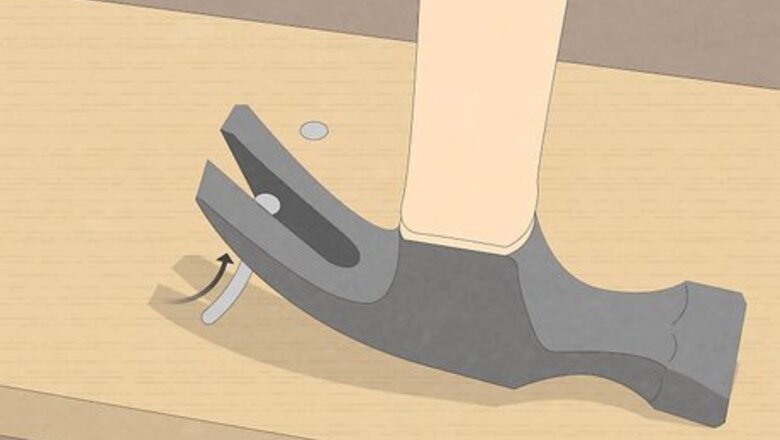
views
Evaluating Your Pallet for Safety
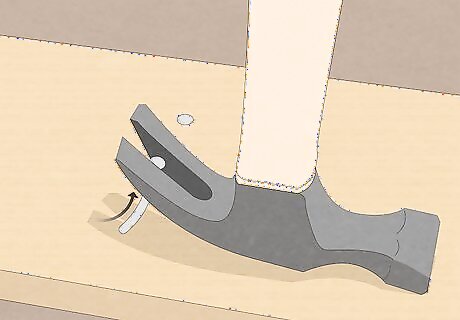
Look for sharp protrusions. Wear thick, non-porous gloves to inspect the pallet. Check the whole pallet to see if there are any nails or tacks sticking out. If you find a protruding nail, remove it with the claw of a hammer. If there are many tacks, you can remove them with a tack puller. If there are tacks covering the whole piece of wood, and they aren’t sticking out, it’s not necessary to remove them. Tacks pose less of a tetanus risk than nails, but they are both sharp and can cause accidental injury.
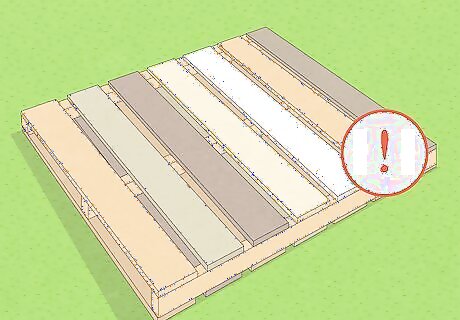
Check the pallet for discoloration. Visually inspect the entire pallet. Avoid colored pallets, which are used to ship chemicals and may be toxic. If you find any area with staining from an unknown source – for instance, if you don’t know the history of the pallet – it’s best to dispose of it. Depending on what the pallet was used for in the past, the stains could be hazardous. For example, pallets that transported food or chemicals may contain pathogens or other dangerous substances.
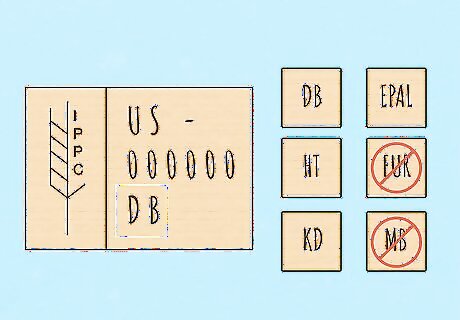
Look for a marking that identifies the pallet. Inspect the pallet for any stamps in numbers, symbols or words that are not part of a company logo. Such markings may be painted, branded or etched onto the wood. If there aren’t any, the pallet is most likely safe. If you find a treatment code – a two- to four-letter code, usually in the lower center of a marking – identify the code. Pallets marked with ”DB” (Debarked), “HT” (Heat Treated), “KD” (Kiln Dried) and “EPAL” (European Pallet Association Logo) should be safe to use. Avoid pallets marked “EUR” unless also marked with “EPAL.” Pallets marked with “MB” (Methyl Bromide) contain toxic fungicide and should be disposed of according to local regulations, which can be found on the website of your locality or trash disposal service. The pallet may contain an abbreviation for the country of origin, a registration number, and other symbols. If the pallet is from an international source and is not marked “IPPC Logo,” it may not be safe to use.
Washing and Sanding Your Pallet
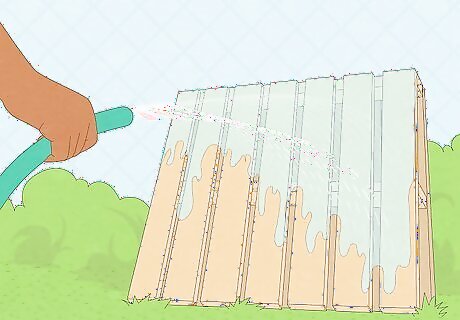
Hose the pallet outdoors. Don’t take the unclean pallet inside your home. Use a garden house or power washer to give the whole pallet an initial rinse. This should wash away any debris. Allow the pallet to dry. Reclaimed wood may contain insects, for example, that you wouldn’t want indoors.
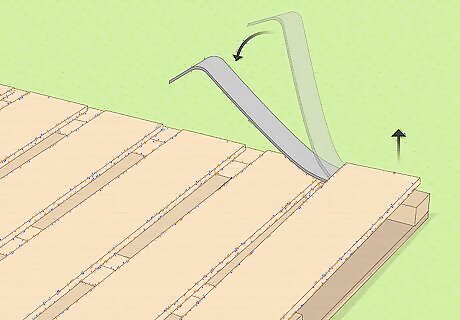
Disassemble the pallet, if desired. Try using a hammer, pry bar and cat’s paw to take apart the pallet without breaking it. If a pry bar doesn’t finish the job, a nail punch or drill can drive the nails out. Alternatively, you can cut through exposed nails with an oscillating tool, or cut through the planks themselves. Disassemble the pallet if you want to use the planks instead of the whole pallet in one piece.
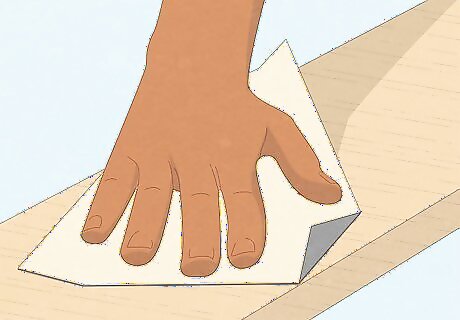
Sand the wood. Place the pallet or planks between sawhorses. Rub the wood’s surface with the grain, starting with a coarse sandpaper and moving up to a fine grade. Sand the entire pallet so that it is smooth to the touch and won’t create splinter. Make sure to sand your pallet outdoors, wearing safety goggles and a respirator to avoid dust issues. If you opt not to sand the pallet, only use it somewhere that family and guests won’t touch it, since rough wood can cause splinter.
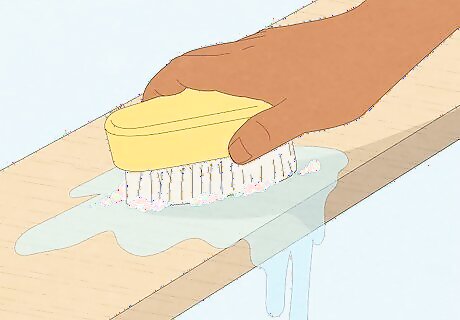
Scrub the wood with a soap solution. In a bucket, combine five parts water to one part dish detergent. Alternatively, you can use a solution of one part detergent, ten parts bleach and twenty parts water. Use a scrub brush to scrub all of the wood with the solution. Scrub notches and grooves vigorously. Wear old clothes and rubber gloves. If you’re using bleach, you should also wear safety goggles and a face mask. You may want to use bleach if you have a reason to suspect mold or mildew. Don’t combine bleach with any products that contain ammonia.
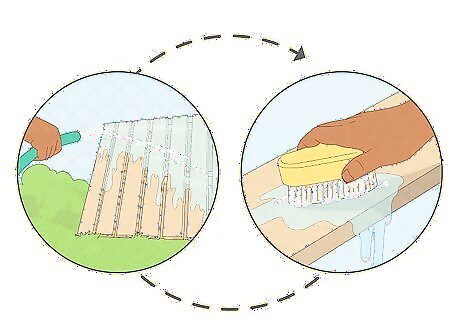
Rinse the wood and scrub it again. Use a garden hose or power washer to rinse all the solution from the wood. Use the solution and your scrub brush to clean the wood a second time. Rinse the pallet a final time, then leave it in the sun until it’s dry.


















Comments
0 comment